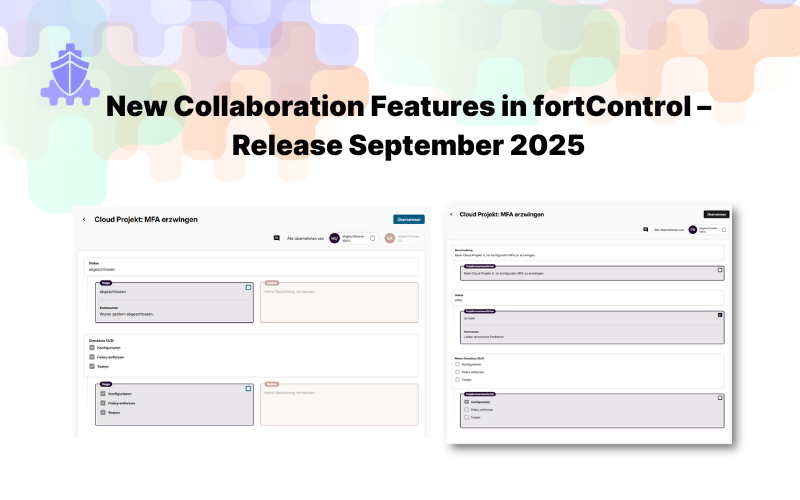Part 4 - Continuous improvement - the helm of cybersecurity
An experienced ship may have weathered countless storms, but the safety of its next voyage depends not just on its past. Similarly, in the realm of corporate cybersecurity, without continuous improvement of approaches and measures, vulnerabilities to new threats remain.
The need for dynamic approaches
In sailing, a stationary ship is a sitting duck - open to attack from all sides. Similarly, in cybersecurity, static defense mechanisms are vulnerable. Emerging threats and evolving regulatory requirements require ongoing optimization of security practices. Businesses must continuously develop their approaches and measures, learning from new insights to proactively respond to threat scenarios and regulatory demands.
Planning the route: Risk assessment and analysis
Continuous improvement in cybersecurity risk management begins with a thorough risk assessment and analysis. It's crucial to regularly identify threats, assess their potential impacts, and plan preventive measures. This dynamic risk assessment allows for swift responses to new threats. Security assessments play a key role as they reveal new threats and risks.
The Plan-Do-Check-Act cycle: Implementation and adjustment of security measures
The Plan-Do-Check-Act (PDCA) cycle is a core tool in risk management. Take, for example, the implementation of Two-Factor Authentication (2FA):
- Plan: Establish requirements and plan the 2FA implementation.
- Do: Roll out 2FA via an app or SMS codes.
- Check: Regularly review the effectiveness of 2FA by analyzing access logs and employee feedback.
- Act: Adjust the 2FA to close security gaps and respond to new threats.
This continuous, cyclical approach not only ensures the ongoing improvement of security strategies but also enhances the maturity and resilience of the company against cyber threats.
Monitoring the weather: Real-time threat detection
Continuous monitoring and detection of threats form the backbone of robust cybersecurity practice. Modern systems, such as Intrusion Detection Systems (IDS) and Security Information and Event Management (SIEM), increasingly utilize Artificial Intelligence (AI) and Machine Learning (ML). These technologies improve detection accuracy and adaptability to new threats by learning from security data and minimizing false alarms. Additionally, a Bug Bounty program enhances external identification of security vulnerabilities and provides valuable feedback to development teams, continuously strengthening the security architecture against new attack vectors.
Are your emergency measures up-to-date?
While ongoing monitoring lays the foundation for timely detection and response, the company must also ensure it can effectively respond to identified threats. A dynamic and well-structured incident response plan is crucial for continually improving response capabilities to cyber incidents. Regular reviews and adjustments of the plan, based on real incidents and drills, enable companies to optimize their preparedness and response to security incidents. For instance, phishing simulations not only assess employee responses but also enhance the iterative improvement of training programs and response strategies that are immediately put into practice.
Training the crew: Education and awareness
Beyond technical monitoring and rapid incident response, the human element—education and awareness of employees—is another critical pillar of cybersecurity strategy. Regular updates to training materials and the introduction of new learning methods reflecting current cyber threats continually enhance the team's awareness and defense readiness. This not only contributes to immediate detection and reporting of security incidents but also promotes a culture of security that adapts to the dynamic threat landscape. Strong governance is essential for the effective implementation of these strategies.
Navigating standards and frameworks
Frameworks and standards in cybersecurity provide guidance and are akin to the stars that have guided sailors for centuries. These include, for example, FINMA guidelines, the revised Data Protection Act (revDSG), the Electricity Supply Regulation (StromVV), IKT minimal standards, the international standard ISO/IEC 27001, and the NIST Cybersecurity Framework. These frameworks not only help companies meet compliance requirements effectively but also significantly strengthen their cyber resilience.
Checking the ship's condition: Regular audits and assessments
Just as sailors regularly maintain their ships, organizations must perform regular audits and assessments of their security measures. These reviews help identify vulnerabilities and recognize opportunities for improvement. Regular audits ensure that the security situation remains current and at a high level. Reviewing security maturity helps measure the progress of security initiatives and ensure continuous improvements.
A Journey in Stages
Implementing continuous improvement is a journey that must be carefully and pragmatically planned. It is advisable to divide the individual stages into manageable sections and precisely define the respective goals and necessary measures. Not every step has to be perfect immediately, but every step forward is a gain. Like a captain who plans his route based on available information, the IT manager must also remain flexible and adaptable to navigate the ship safely through digital waters.
Continuous Improvement as a Strategic Necessity
The journey of cybersecurity is never complete. Organizations must always be prepared to rethink and adjust their strategies to meet the ever-changing threat landscapes. Continuous improvement in cybersecurity is not a one-time endeavor but an ongoing commitment that secures the company against the unpredictable challenges of the digital world.


.png)

.png)